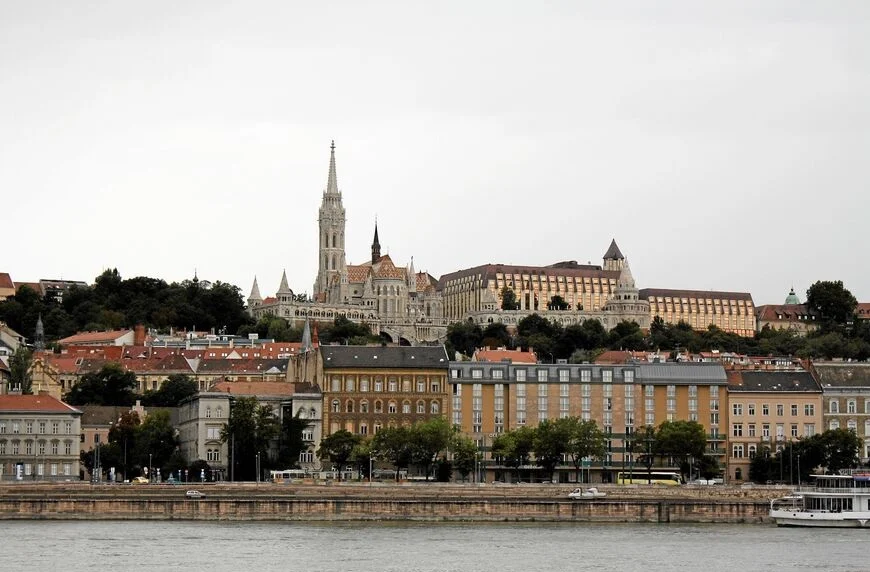 |
The Fisherman's Bastion in Budapest, evokes two associations - fish and fortifications. Although in reality you will not find fish here, and the structure, consisting of galleries and towers, has never been used to protect against external threats. Minor inconsistencies do not affect the love of Hungarians and visitors to the Fisherman's Bastion. First of all, the attraction is loved for its gorgeous views of the Danube and Pest, but not only for that. Let's figure it out.
 |
| Fisherman's Bastion Budapest Hungary |
The history of the Fisherman's Bastion
The architectural structure on the Buda Hill appeared relatively recently and therefore is sometimes undeservedly awarded with the condescending epithet "remake". Like many famous things in Budapest (Vaidahunyad Castle, metro M1), the Fisherman's Bastion (Halaszbastya) began to be erected in honor of the 1000th anniversary of Hungary at the end of the 19th century.
They did not have time to finish the construction for the anniversary, but since 1905 the attraction has been pleasing to the eyes of local residents and visitors. Several hundred years before these events, a walled square was broken up on the site of the Fisherman's Bastion. Here they traded mainly in fish, and the Budai fishermen, in return, pledged to defend a section of the fortress wall in the event of a military threat day and night.
 |
| Fisherman's Bastion Budapest Hungary |
Over time, the walls decayed, and the fishermen stopped their trade here. And together with the reconstruction of the Royal Palace, it was decided to build the Fisherman's Bastion in Budapest, Hungary. Thus, the building owes its name to fishermen, and although it is called a formidable bastion, it never had a defensive value.
The direct purpose of the Fisherman's Bastion is the architectural background for the Matthias Church. The landmark has been successfully fulfilling this role for more than a century. Both the church and the bastion are spread over the Holy Trinity Square (Szentharomsag ter). They are united by one more fact, more precisely the person Frydesh Shulek. This Hungarian architect reconstructed the Matthias Church and also designed the Fisherman's Bastion.
 |
| Fisherman's Bastion Budapest Hungary |
The latter is a 140-meter gallery eight meters wide, which, as it were, hugs the temple. The bastion has seven conical hipped towers, symbolizing the tribes that formed the Hungarian state many centuries ago. During the Second World War, the building of the Fisherman's Bastion was seriously damaged by bombing. Its reconstruction after the end of hostilities was carried out by the son of the architect Frydes Shulek - Janos.
 |
| Fisherman's Bastion Budapest Hungary |
Another reconstruction was carried out in the 80s of the XX century. They decided to hold it, as the walls of the bastion turned gray due to the large amount of gases and polluted air, as well as due to the partial destruction of most of the statues. After the restoration, the Fisherman's Bastion, along with the Buda Palace, were included in the UNESCO World Heritage List.
 |
| Fisherman's Bastion Budapest Hungary |
Another important detail of the Fisherman's Bastion is the monument to the first Hungarian king Istvan the Sacred by the sculptor Strobl. The monument is an equestrian statue of the ruler, standing on a pedestal. The last one is carved with bas-reliefs depicting scenes from the life of Istvan - the coronation, the foundation of the temple, and so on. The monument was erected here in 1906.
 |
| Fisherman's Bastion Budapest Hungary |
If you come to Budapest, Hungary for a few days, then I advise you to visit the Fisherman's Bastion at least twice - in the afternoon and in the evening. You will see two completely different panoramas, and both will surely amaze you.
 |
| Fisherman's Bastion Budapest Hungary |
They say that kilometers of underground passages and tunnels are laid under the Buda Hill. They probably hide many secrets and secrets. You can touch them if you visit the underground St Michael Chapel, discovered during the construction of the Fisherman's Bastion.
 |
| Fisherman's Bastion Budapest Hungary |
Useful information about the bastion
Official site: fishermansbastion.com
Address: Szentháromság tér, Budapest
Working hours: around the clock
Entrance Fee: Access to most of the balconies and towers of the Fisherman's Bastion is free. However, in order to climb to the very top, you will have to buy a ticket
- Adult - 700 forints;
- students and children over 6 years old - 350 forints;
- children under 6 years old - free;
- pensioners (citizens of EU member states) - 350 forints.